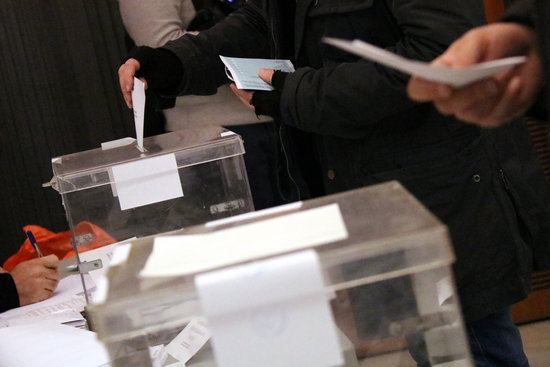Catalonia's electoral system: How does it work?
Voters determine makeup of 135-member parliament that chooses the next president

Catalonia is going to the polls on February 14, but how exactly do elections to the Catalan parliament work?
Voters elect 135 MPs to the unicameral parliament, which then chooses the president of the government from among its members.
The four constituencies
Catalonia has four constituencies, corresponding to the four provinces: Barcelona, Girona, Lleida, and Tarragona.
As Barcelona has a much greater population than the other three, and the electoral system has to "ensure the adequate representation of all parts of Catalonia," it takes less voters to elect each MP in Girona, Lleida and Tarragona.
Specifically, Barcelona has one MP for every 50,000 voters, capped at a maximum of 85. The other three constituencies have a minimum of six MPs, plus one for every 40,000 voters.
This means that Barcelona elects 85 members, Girona elects 17, Lleida elects 15, and Tarragona elects 18, giving the total of 135.
The voting system
Catalonia uses a closed list system, which means the various parties publish a fixed, ordered list of candidates for each constituency. Voters then vote for the list of candidates put forward by the political parties, rather than choosing a preferred individual candidate.
This is a form of Proportional Representation, designed so that the makeup of the parliament resembles the voting preferences of the electorate at large. In other words, if, for example, 20% of people vote for a particular party, that party can expect to win approximately 20% of the seats in parliament.
Parties need to gain at least 3% of votes cast (including blank ballots) in a constituency in order to have the possibility of gaining a seat. The seats in each constituency are distributed among the parties using the D'Hondt method.
Choosing a president
One of the first jobs of the newly elected 135 MPs is to choose the next head of the Catalan government. Typically, the first name on a party's list for the Barcelona constituency doubles up as their candidate for president.
Within ten days after the opening session of parliament, the speaker must propose a presidential candidate to seek enough support to be elected by lawmakers. The candidate tries to convince lawmakers to vote for them.
They have two chances. The first requires an absolute majority (at least 68 MPs voting in favor). The second, held two days later, requires a simple majority (more yes votes than no). If they fail to pick any MP for the post, a two-month period opens to repeat the procedure as many times as needed. If lawmakers do not meet the deadline, an automatic election is called – so far, MPs have always found the way out of deadlocks and have always avoided an election repetition.
Once appointed, the president can then appoint ministers to the cabinet.
Achieving the 68 seats needed to form a majority is a tall order for any one party, which makes coalitions and minority governments a common outcome. The largest party doesn't necessarily form part of the government.
In theory, the parliament then has a four-year mandate before elections have to take place again. In reality, political stability has been hard to come by in recent years. Most recently, former president Quim Torra was removed from office by the courts, leading to the 2021 vote, the fifth election since 2010.